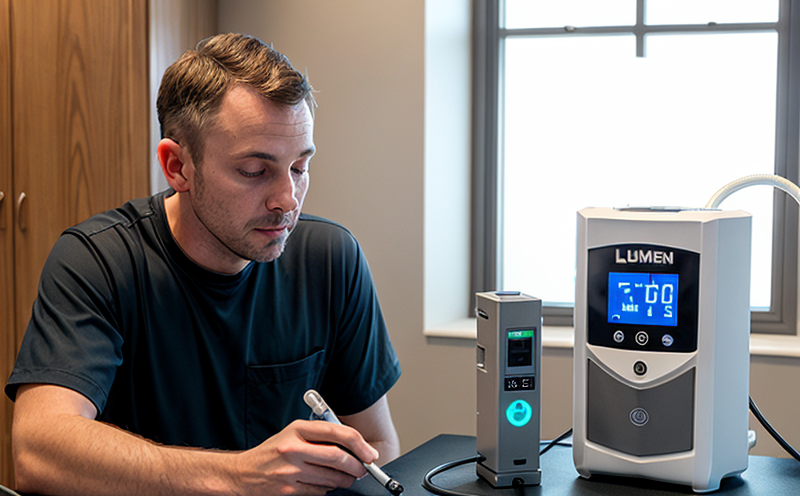EN 13032 4 Lumen Maintenance Testing of Indoor Luminaires
The European standard EN 13032-4 is crucial for quality assurance in the lighting industry, especially for indoor luminaires. This standard sets out the requirements and test methods to evaluate lumen maintenance over time, which is a key performance indicator (KPI) for LED and fluorescent lights. Lumen maintenance refers to the amount of light emitted by an luminaire after it has been used for some time compared to its initial output.
Understanding lumen maintenance helps manufacturers and end-users ensure that lighting systems continue to perform as expected, thus extending their service life and energy efficiency. This standard is particularly important in sectors like commercial buildings, educational institutions, and healthcare facilities where prolonged use of luminaires is common.
The testing process under EN 13032-4 involves several stages:
- Initial measurement of lumen output
- Exposure to environmental conditions (temperature, humidity) that simulate real-world usage
- Regular re-measurements at predetermined intervals
- Evaluation against initial values to determine the rate of lumen degradation
The goal is to ensure that luminaires meet regulatory requirements and maintain their brightness within acceptable limits. This not only enhances user satisfaction but also contributes to energy conservation efforts.
For R&D engineers, this standard provides a framework for product development, helping them design more efficient and long-lasting LED products. Compliance officers can use the results of these tests to ensure that purchased luminaires meet required standards, thus protecting their organization’s reputation and compliance status.
Why It Matters
The importance of lumen maintenance testing cannot be overstated. As lighting systems age, they tend to lose efficiency over time, leading to reduced performance and increased energy consumption. By conducting regular lumen maintenance tests according to EN 13032-4, manufacturers can identify potential issues early on and implement corrective measures.
Compliance with this standard is mandatory for certain applications where high-quality lighting is critical, such as hospitals or airports. In these environments, even minor fluctuations in light output can have significant impacts on patient care or operational efficiency. Thus, ensuring consistent performance aligns directly with the organization’s goals.
In terms of sustainability, lumen maintenance testing plays a vital role by promoting energy-efficient lighting solutions that last longer and consume less power over their lifetime. This contributes positively to environmental initiatives aimed at reducing carbon footprints across various industries.
Benefits
Conducting lumen maintenance tests according to EN 13032-4 offers numerous benefits for both manufacturers and end-users:
- Enhanced Product Quality: Ensures that luminaires perform consistently throughout their lifespan, meeting customer expectations.
- Improved Efficiency: Identifies inefficiencies early in the development process, allowing for improvements before products reach market.
- Regulatory Compliance: Helps companies stay abreast of changing regulations and standards related to lighting technology.
- Cost Savings: By identifying problems during testing rather than after sales, businesses can avoid costly recalls or warranty claims.
- Sustainability: Promotes the use of more sustainable materials and designs that contribute towards greener operations.
- User Satisfaction: Consistent lighting performance leads to higher customer satisfaction levels.
Quality and Reliability Assurance
When it comes to quality assurance, lumen maintenance testing is an essential component. It ensures that luminaires maintain their specified light output over time, which is critical for maintaining the integrity of lighting systems.
- Initial Testing: The process begins with measuring the initial lumens emitted by a luminaire before it undergoes any aging or environmental stress.
- Aging Process: After placing the luminaire in a controlled environment that simulates typical use conditions, periodic re-measurements are taken to assess lumen depreciation.
- Data Analysis: The collected data is then analyzed against predefined criteria outlined in EN 13032-4 to determine compliance and identify areas for improvement.
The results of these tests provide valuable insights into the durability and reliability of luminaires, enabling manufacturers to make informed decisions about design modifications or component selection. This approach fosters continuous improvement within the industry, ultimately benefiting all stakeholders involved.





